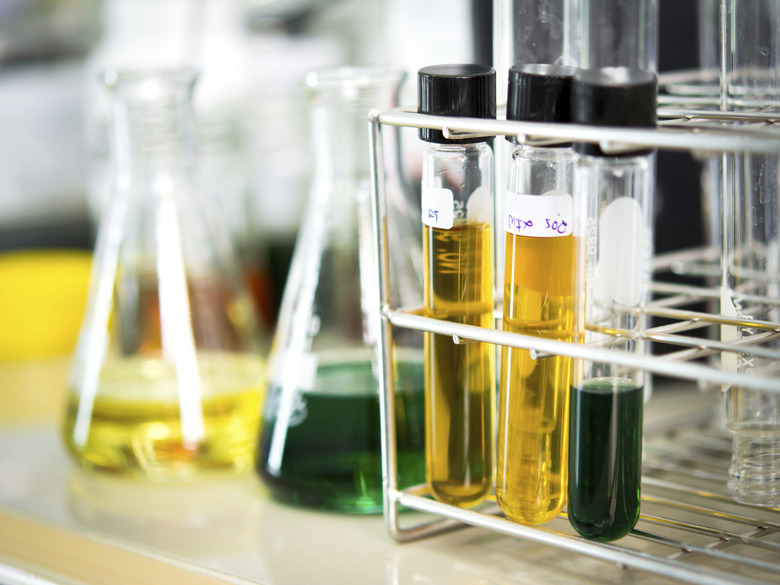Methods For Degassing Buffers
Whether or not you need to degas, or deaerate, your buffer solution will depend on its application. If the presence of excess oxygen in the buffer will affect the chemical reaction you are looking for, or if the formation of air bubbles in the solution will affect readings or flow, you will have to degas your buffer. This article assumes you have already prepared your buffer and filtered it if necessary.
Vacuum
Vacuum
Degassing by vacuum is the most common way to remove air from a buffer solution. Place your solution in a side-arm flask with a stir bar and use a rubber stopper to seal off the top. Place the flask on a stir plate and turn the plate on so the stir bar is spinning at a medium speed. This helps to move air out of the solution. Connect the hose for the vacuum system to the flask's side-arm and turn on the vacuum at a low rate. Allow the solution to degas for at least one hour.
Vacuum with Sonication
Vacuum with Sonication
Using the same setup with the side-arm flask and vacuum, you can omit the stir plate and stir bar and place the flask in a sonicator. The sonicator uses sounds waves that will release more air from your solution than the stir bar can.
Helium Sparging
Helium Sparging
Helium sparging — also called helium bubbling or inert gas purge — is one of the most effective ways to degas your buffer if you have a helium line in your lab. Place a sparging frit — a connector that has a stone-like filter at the end — on the end of your helium line and place the line and frit into your solution. Turn on the helium at a very low pressure for about five minutes to allow the helium to remove the oxygen. This may have to be repeated daily.
Inline Degassers
Inline Degassers
Some chromatography systems will have an inline solution degasser. The system will remove the gas from your buffer before it is sent through the chromatography column. You don't have to degas your solution beforehand. However, if you are experiencing baseline noise on you chromatogram, you should consider degassing using one of the above methods in addition to using the inline degasser.
Cite This Article
MLA
Painter, Tammie. "Methods For Degassing Buffers" sciencing.com, https://www.sciencing.com/methods-degassing-buffers-6925709/. 24 April 2017.
APA
Painter, Tammie. (2017, April 24). Methods For Degassing Buffers. sciencing.com. Retrieved from https://www.sciencing.com/methods-degassing-buffers-6925709/
Chicago
Painter, Tammie. Methods For Degassing Buffers last modified August 30, 2022. https://www.sciencing.com/methods-degassing-buffers-6925709/
